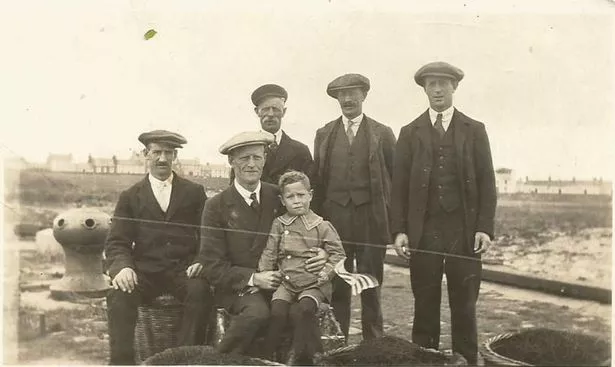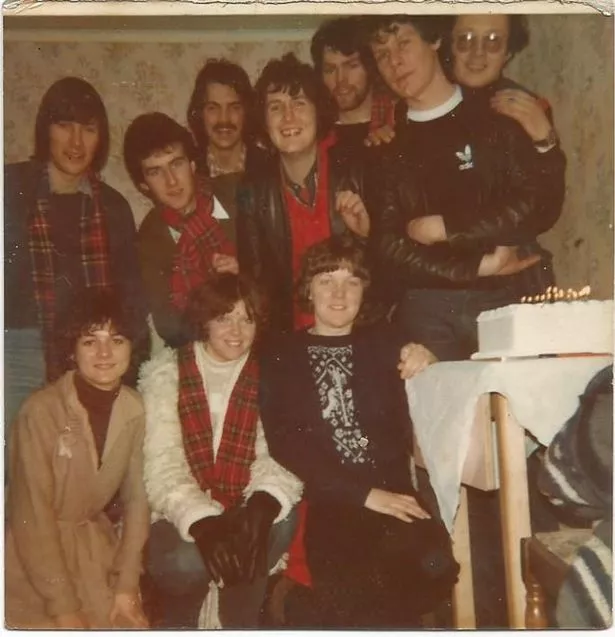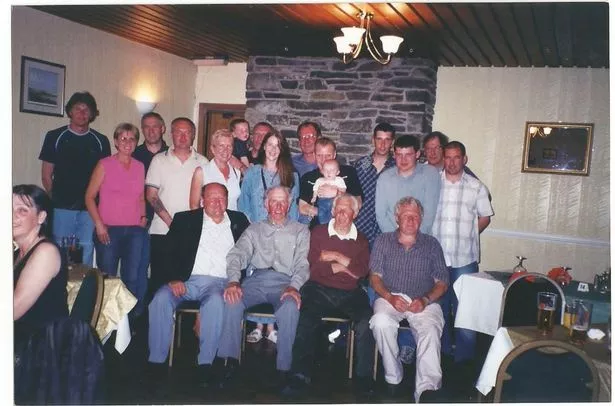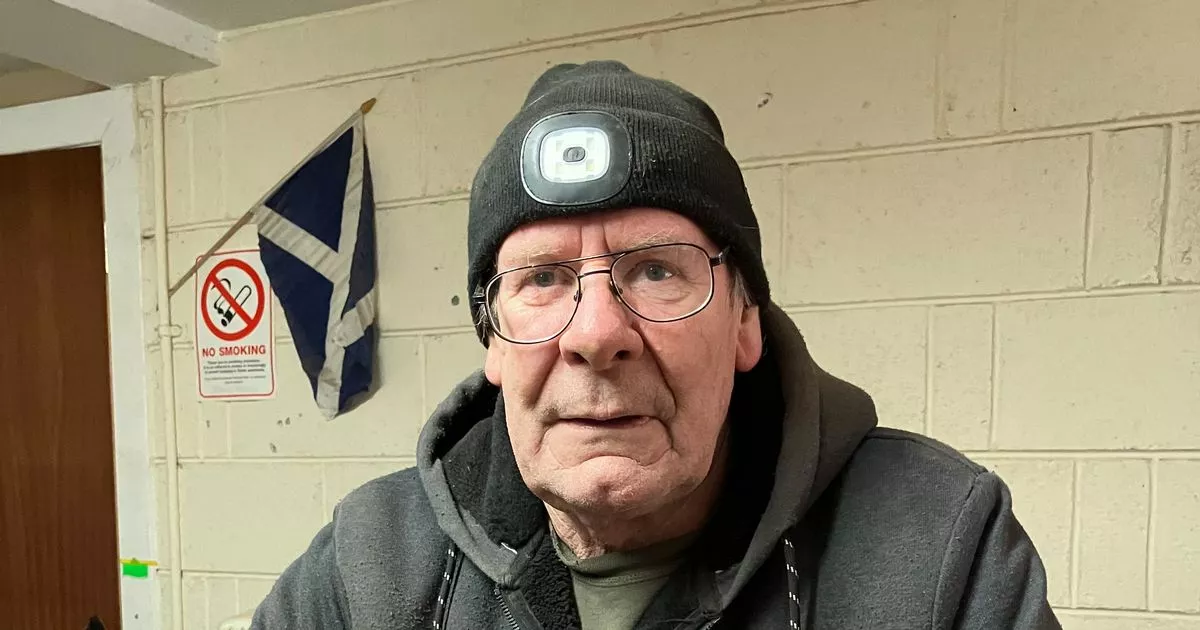He’s maybe not as venerable as Santiago in Hemingway’s novella The Old Man and the Sea.
That said, Shaun McGuire has five decades of earning a living above and below deck, which in anybody’s book certainly makes him a veteran mariner.
As I walk in the door of his little workshop on the quayside at the Isle of Whithorn, the 66-year-old is busy mending a lobster creel with hands long accustomed to the task.
“The lobsters are very poor just now, they don’t feed in the cold weather,” he says, when I ask how the fishing’s going for the much-prized crustaceans.
His first boat, he tells me, was built at Kirkcudbright,in Gibbshill Sawmill more than 40 years ago, when small-scale boat building was still a living industry in Galloway.
Apart from his hauling up lobsters, Shaun is harbour master at “the Isle” as it’s known to everyone with an affection for the picturesque village at the southern tip of the Machars.
He’s also secretary of the Galloway Static Gear Fishermen’s Association, which has members from Kirkcudbright to Ballantrae, and was the local Coastguard station officer, a role filled by his father and grandfather before him.
That fishing and the sea is in Shaun’s blood is an absolute truth – the men in his family have worked on boats the world over for generations.
And he’s something of an authority on local history, particularly that of Whithorn and the little port he calls home.
Wrapped up in all that is a deep knowledge of his family’s heritage which, like so many in Galloway, has a strong Irish thread woven through it.
“In the parish records of Scotland, I have got family in Whithorn in 1856 on the McGuire side,” he says.
“My great-great-grandfather was Patrick McGuire and he’s down on the census as a riddle maker (a big circular sieve with a wooden rim).
“He came over from Ireland – the McGuires were the owners of County Fermanagh, but I’m not sue if we’re connected to them.
“He married Hannah Murphie, whose parents were also Irish and lived in the Back Ra’, the wee lane behind High Street.

“Those houses are gone now.
“My great-grandfather Martin McGuire was born in 1862 and in the 1901 census was living in the Isle.
“He was a fisherman and had four sons and three or four daughters.
“His wife died young and he remarried after that.
“All his sons, Peter, known as Pate, Anton, John, my grandfather – he was called Jeck – and Charlie were all fishermen.
“In 1901 Jeck started working the salmon nets at Portyerrock and leased the salmon rights from the Crown Estates.
“He would fish for salmon in summer and lobsters in the winter.
“I was only seven when he died and spent a lot of time with him.
“He was in charge of the Coastguard at the Isle and served in the Royal Navy in the First World War.
“When the Second World War came along the army made contact and wanted to use his knowledge because of the remoteness of this area.
“They asked his advice about where they could work on and trial the Mulberries – the prefabricated harbours used to off-load supplies from ships to the army on the Normandy beaches on D-Day.
“A lot of stuff was launched at Garlieston, but there was a big camp and firing range at Cairnhead at Portyerrock Bay, three miles down the coast.
“There’s a letter thanking my grandpa for all the help he gave them in choosing the right location.
“He recommended the area because it was quite sheltered and safe.
“There were strong tides round about, but not there, and the tides were considered similar to Normandy.
“He lost his eldest son John in World War Two, and two of his nephews.
“The are five names from the Second World War on the Isle war memorial – and three were John and his two cousins.”
Continuing his fascinating family history, Shaun tells me Ernie was born in 1925 and married his mum Sarah Farrell from Whithorn in what was a double celebration.
“It was a double wedding,” he says with a grin.
“My dad’s brother Martin married Sarah’s sister Cathie in the Catholic church in Whithorn at the same time.
“Ernie and Martin were both Church of Scotland, but they never changed.
“There’s two of us – me and my brother Malcolm, who’s five years younger than me.
“In the time honoured tradition, Ernie’s life was the sea.
“He was a fisherman most of the time, but did National Service for the army in Aden with his Lieutenant Commander Iain Drape, the ironmonger from Whithorn.
“He called him sir all his life – if he met him in the street at the Isle he would say ‘hello, sir’.
“Iain would tell him not to be daft – but it never made any difference.
“Ernie was in charge of the Coastguard team at the Isle and was a lobster fisherman.
“And for a couple of years he was running the boating lake at Stranraer – and also worked at the Murray Arms in Gatehouse as a porter.
“He commuted from the Isle and bought a car – and within a year put 48,000 miles on the clock.
“He was doing split shifts and was travelling there and back twice a day.
“My mother Sarah was born in 1931 and for years worked for different chemists at Whithorn.

“She was trained to dispense drugs and medicines, some of which were made up on the premises.”
Shaun tells me he came into the world on February 20, 1958 – and did not go to Isle of Whithorn Primary.
“The Isle school was still going then, but my mum chose to send me to Whithorn for a Catholic education,” he says.
“My dad had no say and just did what he was told.
“We were sent up to the church for RE (Religious Education) once a week.
“I enjoyed my time at Whithorn Primary and made lifelong friends, some of whom have sadly passed away.
“You learned well there and when you went to the Douglas Ewart you were not behind anybody else.”
I ask Shaun about his time outside of school – and it’s little surprise to hear his hobbies revolved around the sea.
“We always did a lot of rowing when we were younger”, he recalls.
“I competed in the Isle regatta and the family also used to go to Port William and Garlieston regattas.
“We did sailing as well and started off as cadets with the Wigtown Bay Sailing Club – my da Ernie was a founder member.
“You would do your sailing in the summer months and in the club house in winter time Dr Robertson would teach us knots and navigation skills, which were basic but important.
“They had a couple of cadet boats and you went with the adults until you were deemed experienced enough to go out on your own.”
With fishing and boats in his blood from early childhood, the next chapter in Shaun’s story seems almost predestined.
After gaining his Highers, he recalls, the oceans of the world beckoned and he embarked on a career with the Merchant Navy.
“I left the Ewart at 17 and joined the Ellerman City Line,” he recounts, the memories obviously still vivid.
“All their ships were called city – City of London, City of Gloucester, City of St Albans.
“I did a four-year cadet-ship at the Glasgow College of Nautical Studies, which was two years at college, one year at sea then a year back at college.
“You had exams all the way through it.
“At first I thought Glasgow was a bit big – the college was in the Gorbals and I says ‘you were meant to be shy’, – so I had to come out of my shell.
“The first year you had to stay in the college accommodation in the Gorbals and they were all single rooms.
“They called them cabins because you were going to sea.
“The way it fell I was lucky – the boy next door was from Dumfries and along the alley was a fella from Annan.
“I had to interpret for him because he spoke like a machine gun and nobody could understand him.
“At the college you got electronics technology, applied heat, maths, applied mechanics – stuff like that, and your practical in the workshop.

“You would get set tasks like making a valve and weld it together then test it to destruction.
“Most folk could do electric welding but couldn’t do gas welding.
“I was the opposite and was always spot on because it was all gas we were using.”
Shaun still remembers a colourful social life in pubs around the college, funded by a wage packet and free digs.
“It was a great grounding in life,” he says with considerable understatement.
“We were students, but were actually employed by the shipping line and getting paid.
“In my first year I was earning £84 a month in your hand – digs and meals were all paid for under your employment by the company.
“So that was your spending money – and in 1976 you got four pints for £1.
“We stayed across from a pub called the Cleland bar and I would have a pint there with Archie, a boy from the Isle of Mull.
“We went quite a lot but some of the other cadets thought they were better than the folk in the Gorbals.
“I mind one night Archie and me were having a drink and all hell broke loose with these eedjits that thought themselves better than the local folk.
“There was a dance floor in the middle with chairs and tables on wee balconies on either side.
“Then I hears this shout behind me “Naw! The big guy’s a’right, he’s no’ wi’ them!”
“I looks round and there’s this fella standing ready to whack me with a chair.
“If it wasn’t for his mate we would have got a whaling.
“And when we came back from sea the Cleland bar had been blown up.”
Shaun remembers the date when he went to sea with ease – the day, month and year were numerically identical.
“I joined my first ship, the City of London at Liverpool on 7/7/77,” he smiles.
“I was very lucky that one of the cadets from the Glasgow college joined the ship with me.
“It was supposed to be a three-month trip – but it turned into five and a half.
“We were to go through the Med to Suez, through the canal, into the Gulf of Aden and back to the UK.
“But while we were away there was cargo we had to pick up in South Africa, and we went to Port Elizabeth, East London, Cape Town and Durban.
“It was during apartheid and this huge beach had a whites only section with summer seats, shark nets and lifeguards.
“There was nothing on the other one.
“The Indian waiters in the bar would aye serve us first because we treated them like onybody else.
“Japanese folk were classed as white and Chinese as black – and that treatment was all because of money.We had no problems out there – the United States was more racist than South Africa.
“I found that out when we did the St Lawrence on the City of St Albans and went through the Great Lakes with general cargo to Chicago.
“I was an engineer on board and worked in the engine room and boiler room.”
Shaun’s job, he explains. along with the senior engineers, was to prevent anything mechanical going wrong – and to fix it when it did.
“When I was on the City of Gloucester we were at Dar-es-Salaam in Mozambique and we had to change a cylinder liner.
“The cylinder was huge, two decks high, and the piston was three or four feet across.
“The problem was the liner kept breaking piston rings every time we started up the engine.
“We had to jack the liner up out of the cylinder and the job was six hours on, six hours off for three days solid.
“We put it all back together and from Dar-es-Salaam to Suez we never had an extended period with the revs running.
“But once we hit the Med we took her up to 18 knots, which was pretty much full speed.
“And just when we had almost passed Gibraltar there was the biggest bang you ever heard in your life – cooling water was pouring everywhere.
“The engine was three decks high and at the middle deck level you could see the piston glowing pink with the heat.
“We found the problem – the third engineer had put over-sized piston rings on by mistake.
“We were feeding in water to stop it overheating and got pulled into Gibraltar by a tug.”
Next voyage for Shaun was Jeddah, in Saudi Arabia.
Don’t miss part two of his story in next week’s Galloway News.







